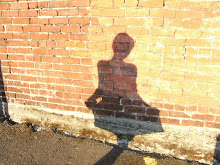
There are too many places to begin. The deep economic crisis, political uncertainty concerning Zimbabwe’s President Robert Mugabe, universities closing their doors to the impending academic year due to water and food shortages... the list is seemingly endless. Though, in sifting through the information grouped around the standard tales of disaster, political frustration and general misfortune, I came upon something uplifting. An alternative lens through which to view human aggravation; one that is older than humans, older than war and hunger and currency: the land itself.

Not to ignore or downplay the importance of other issues at hand, I wish to begin with the larger picture. “The Limits of What We Know” is a film fifteen years in the making, by documentary filmmaker Amy Bodman. Her in-depth portrait of Zimbabwe is broken up into chapters like “The Great Zimbabwe Monument “,“The Composition of Drought”, “The Language of Trees”, “Rain”, “Clay,” etc. On the film’s website, Bodman describes her endeavor as “part travel log, part environmental study and part meditation on life itself.”

Though perhaps unrelated on the surface, “The Limits of What We Know” promises to address the very issues that dominate today’s media—issues that concern not only Africa, but also the world as a whole. The effects of human control over the earth are felt in ways ranging from increased environmental crises to the political and economic issues mentioned above. Yet the two realms are rarely seen as directly related; in fact, news from the ecological front barley makes it past the political deliberations. “(The film) culminates as a heart-felt picture of our changing world as it struggles to compensate for the ever-increasing dominance of the human race,” writes Bodman. “... The film explores a worldwide phenomenon: the separation of humanity both spiritually and concretely from the ecosystems that support it, and this separation’s potentially devastating effects.”

Though the Zimbabwe of 2008 is much changed from the Zimbabwe of 1993—when Bodman and her team explored the people and land through 16 mm film—many cultural and historical aspects of the film are still relevant. As are the personal stories of numerous individual Zimbabweans, for which the documentary provides a “living record.” Ultimately, though, the film is meant to stand as a question targeting those who are willing to consider new perspectives, and perhaps even more so to those who aren’t. “The audience is asked to weigh these couplings in order to broaden the picture at hand; in order to ask them to consider the limits of what they know.”
Images from film website. Clip via Treehugger.

No comments:
Post a Comment